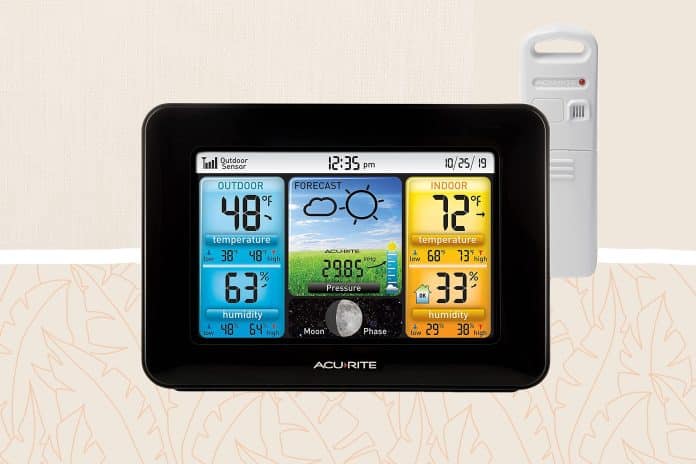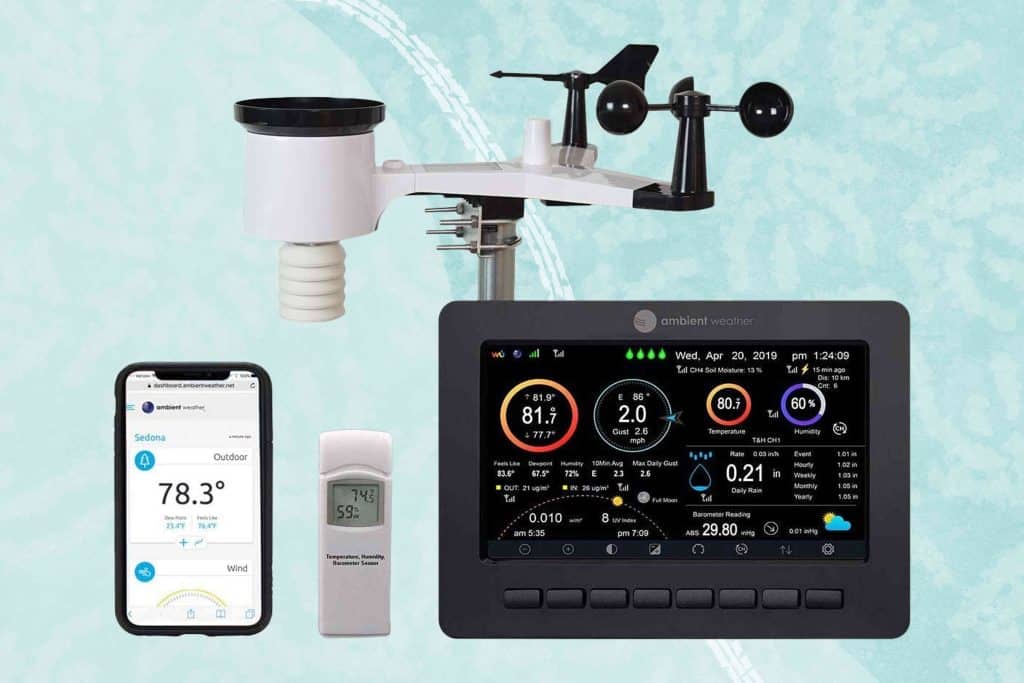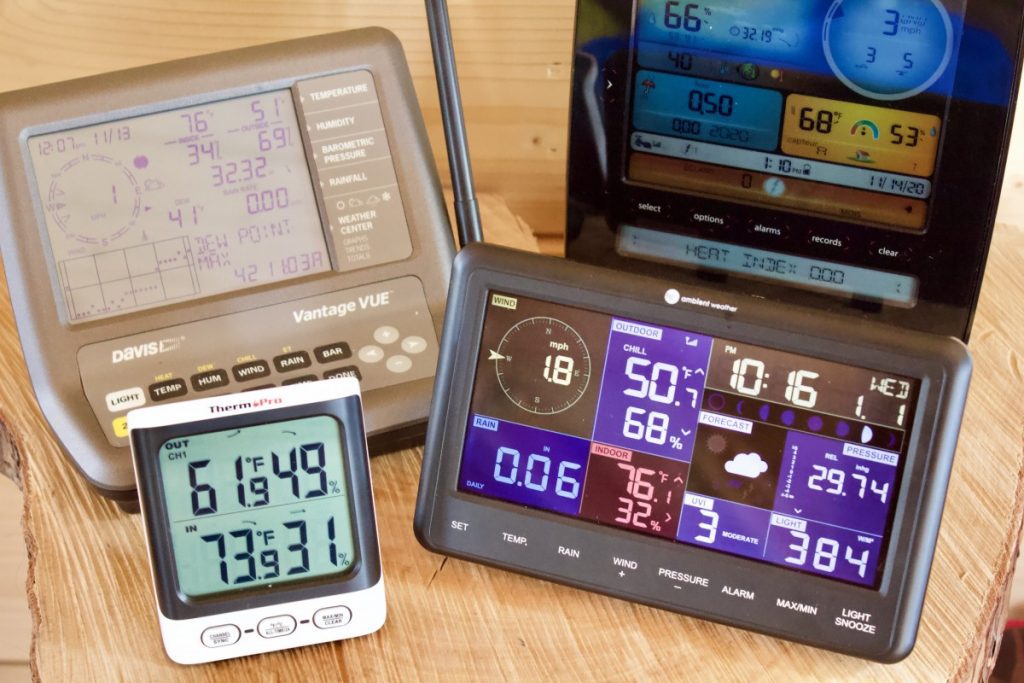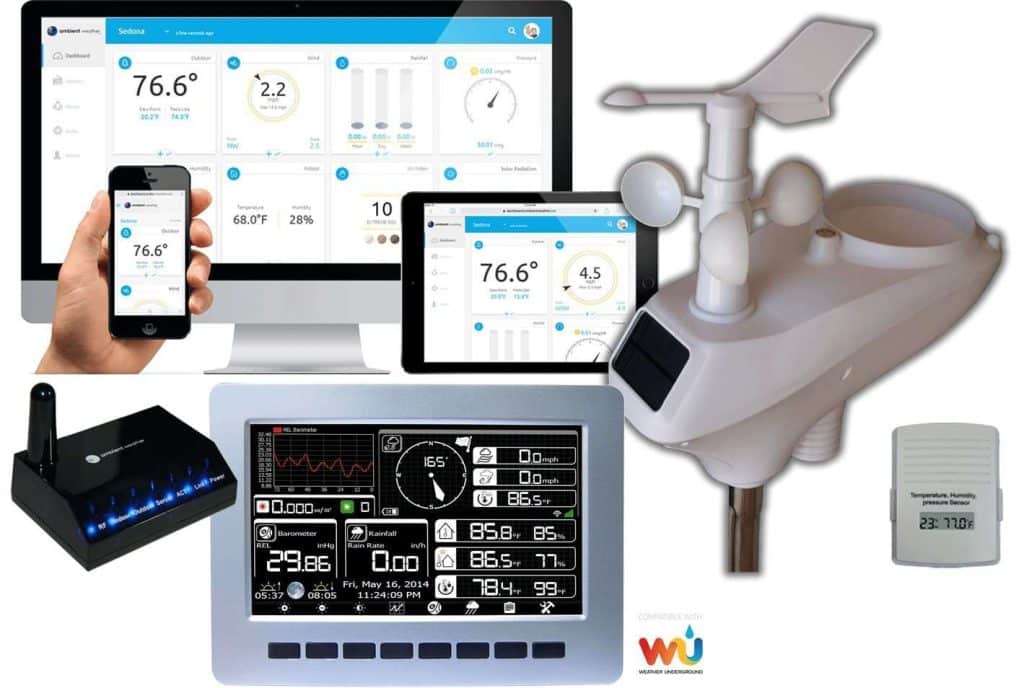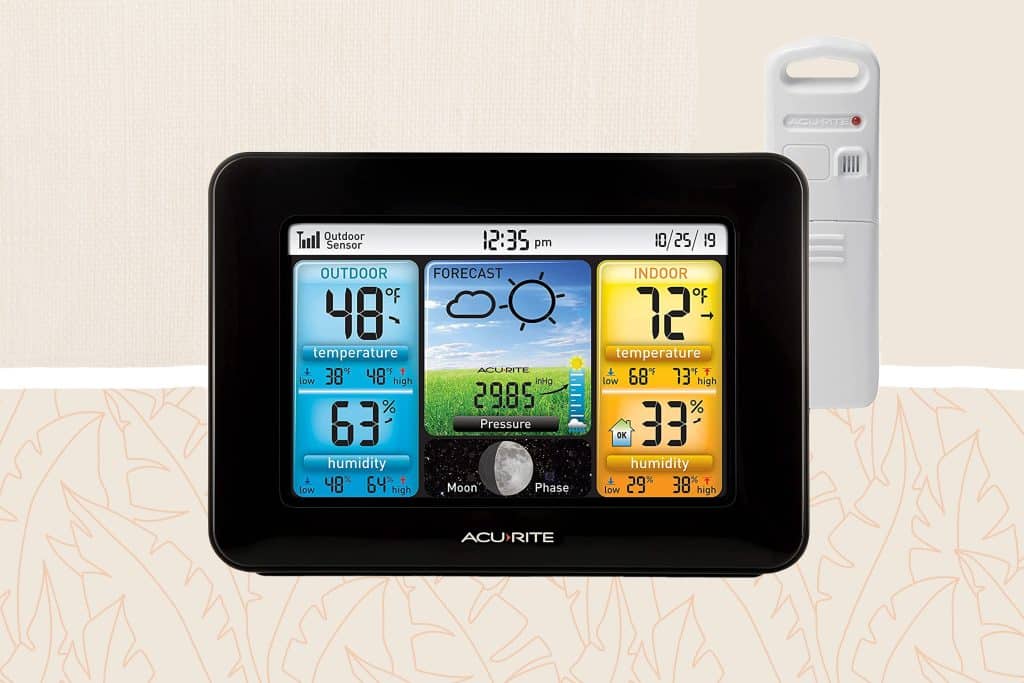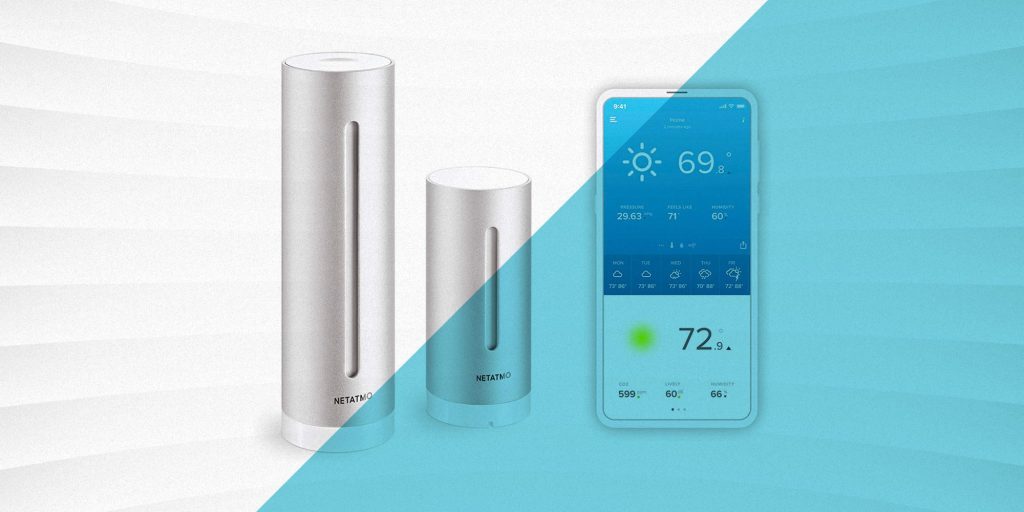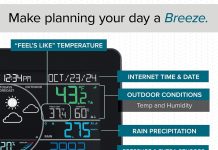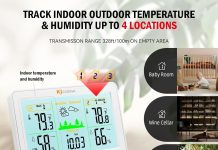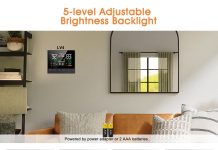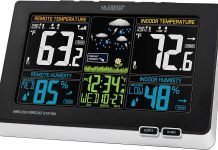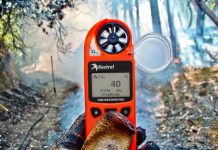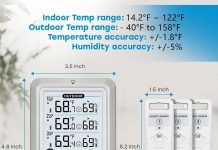Curious about the different types of home weather stations? Look no further! This article explores the wide variety of options when it comes to monitoring the weather from the comfort of your own home. Whether you’re a keen gardener, a weather enthusiast, or simply someone who loves staying ahead of the changing climate, there’s a home weather station out there to suit your needs. From basic models that provide temperature and humidity readings, to advanced systems that track wind speed, rainfall, and even UV levels, we’ve got you covered. So, let’s dive in and discover the exciting world of home weather stations!
This image is property of www.thespruce.com.
Review contents
1. Basic Weather Stations
When it comes to home weather stations, there are various options available to suit different needs and preferences. Basic weather stations provide essential weather information and are a great starting point for those who are looking to monitor the local weather conditions. These stations typically consist of analog or digital instruments that measure temperature, humidity, and barometric pressure.
1.1 Analog Weather Stations
Analog weather stations offer a traditional and nostalgic approach to monitoring the weather. These stations usually include a thermometer, hygrometer, and barometer, all housed in a charming and classic design. With analog dials and readings, they provide a simple and straightforward way to keep track of the temperature, humidity, and atmospheric pressure. Analog weather stations are often favored by those who appreciate a vintage aesthetic and enjoy the tactile experience of interacting with physical instruments.
1.2 Digital Weather Stations
Digital weather stations, on the other hand, cater to those who prefer a more modern and user-friendly approach to monitoring weather conditions. These stations typically feature a digital display that provides easy-to-read and accurate measurements of temperature, humidity, barometric pressure, and even additional information such as wind speed and rainfall. Digital weather stations often come with advanced features such as weather alarms, data logging capabilities, and the ability to connect to external sensors or online platforms.
2. Wireless Weather Stations
Wireless weather stations offer the convenience of remote monitoring without the hassle of wires and cables. These stations utilize wireless technology to transmit weather data from the sensors to a main display unit or a compatible device such as a smartphone or computer.
2.1 Station with Remote Sensor
A wireless weather station with a remote sensor allows you to place the primary sensor outdoors while keeping the display unit indoors. The remote sensor measures the temperature, humidity, and other weather parameters and wirelessly transmits this information to the indoor display unit. This setup allows you to conveniently monitor the weather conditions from the comfort of your home without having to venture outside.
2.2 Internet-Connected Stations
Internet-connected weather stations take wireless capabilities to the next level by allowing you to access your weather data remotely through the internet. These stations typically come with a base station that connects to your home’s Wi-Fi network, enabling you to access real-time weather information from anywhere using a smartphone, tablet, or computer. Internet-connected weather stations often provide additional features and services such as accessing historical weather data, receiving weather alerts, and sharing your weather information with online communities.
This image is property of w2f2z6e6.stackpathcdn.com.
3. Professional Weather Stations
For weather enthusiasts, meteorology professionals, or those who require highly accurate and precise weather measurements, professional weather stations offer the utmost reliability and functionality.
3.1 Advanced Sensor Technology
Professional weather stations employ advanced sensor technology to deliver accurate and precise readings. These stations often include high-quality sensors for measuring temperature, humidity, barometric pressure, wind speed, wind direction, rainfall, and more. The sensors are designed to meet the rigorous standards set by meteorological organizations, ensuring that the measurements are reliable and comparable to official weather data.
3.2 Accuracy and Precision
In addition to advanced sensor technology, professional weather stations incorporate features such as calibration capabilities, data logging, and integration with other meteorological instruments to ensure accuracy and precision. These stations often provide detailed and customizable data displays, allowing users to access and analyze data in real-time. Professional weather stations are essential tools for weather professionals, research institutions, and anyone who requires precise and reliable weather information for scientific, agricultural, or other specialized applications.
4. Portable Weather Stations
If you need to monitor weather conditions on the go or in remote locations, portable weather stations are the perfect solution. These stations are designed to be lightweight, compact, and battery-powered for easy transportation and operation in various environments.
4.1 Handheld Weather Stations
Handheld weather stations are designed to be portable and easy to use. These compact devices typically include basic sensors for measuring temperature, humidity, and barometric pressure. Handheld weather stations are great for hikers, campers, and outdoor enthusiasts who want to keep track of the weather conditions during their adventures. Some models also feature additional sensors such as compasses, altimeters, and GPS capabilities to enhance the outdoor experience.
4.2 Compact and Lightweight
Compact and lightweight portable weather stations are ideal for those who need a more comprehensive set of weather measurements while still maintaining portability. These stations often include additional sensors for measuring wind speed, wind direction, rainfall, and other parameters. Despite their compact size, these stations offer accurate and reliable readings, making them suitable for activities such as construction projects, field research, and outdoor events.
4.3 Battery-Powered
Portability is a key feature of portable weather stations, and battery power ensures that these stations can operate without relying on electrical outlets. Most portable weather stations are powered by replaceable or rechargeable batteries, allowing users to take them to remote areas where electricity may not be readily available. The battery-powered feature also enhances the versatility of these stations, making them suitable for both outdoor and indoor use.
This image is property of www.lifewire.com.
5. Multi-Sensor Weather Stations
Multi-sensor weather stations combine the capabilities of multiple sensors into a single unit, providing a comprehensive and integrated approach to weather monitoring. These stations offer a wide range of data collection options and often come with advanced features for data analysis and display.
5.1 All-in-One Weather Stations
All-in-one weather stations are designed to provide a complete weather monitoring solution in a single package. These stations typically include multiple sensors for measuring temperature, humidity, barometric pressure, wind speed, wind direction, rainfall, UV index, and solar radiation. With all the necessary sensors integrated into one unit, all-in-one weather stations offer convenience and simplicity. They are easy to install and require minimal maintenance, making them suitable for both residential and commercial applications.
5.2 Multiple Sensors for Data Collection
Multi-sensor weather stations also come in modular or customizable configurations, allowing users to choose and add specific sensors according to their needs. These stations offer the flexibility to expand the capabilities of the weather monitoring system as required. For example, additional sensors for soil moisture, leaf wetness, or lightning detection can be added to provide a more detailed and specialized analysis of the weather conditions. The ability to customize the sensor setup makes multi-sensor weather stations suitable for research, agriculture, and other applications that require specific measurements.
6. Smart Home Weather Stations
As smart home technology continues to evolve, weather stations have also embraced the integration with home automation systems. Smart home weather stations offer seamless connectivity with other smart devices, enabling users to access and control their weather data through voice commands or mobile apps.
6.1 Integration with Home Automation Systems
Smart home weather stations can be integrated with popular home automation systems such as Amazon Alexa, Google Assistant, or Apple HomeKit. This integration allows users to use voice commands to retrieve weather information or control other connected devices based on weather conditions. For example, you can ask your smart assistant about the current temperature or humidity, and it can adjust your thermostat or activate your sprinkler system accordingly.
6.2 Voice Control and Mobile Apps
In addition to voice control, smart home weather stations often offer dedicated mobile apps for convenient access to weather data on smartphones or tablets. These apps provide real-time updates, historical data, and customizable alerts so that users can stay informed about the weather conditions at all times. With the ability to integrate with other smart devices, smart home weather stations offer a holistic approach to weather monitoring and enable users to create personalized automation routines based on weather data.
This image is property of www.bhg.com.
7. Do-It-Yourself (DIY) Weather Stations
For those who enjoy tinkering and want to have full control over their weather station, DIY weather stations provide the perfect opportunity to build a customized monitoring system. DIY weather stations allow users to assemble and configure their own sensors, displays, and data logging systems.
7.1 Building Your Own Weather Station
Building a DIY weather station can be a rewarding and educational experience. It allows you to select the specific sensors and components according to your requirements and budget. DIY weather station kits are available in the market, providing a starting point with all the necessary components and instructions. Alternatively, you can choose to source individual sensors and components to build a completely custom setup. Building your own weather station also gives you the freedom to experiment with different sensor placements and configurations to optimize data collection.
7.2 Customizable Features
One of the key advantages of DIY weather stations is the ability to customize features and functionalities. With access to the raw data from the sensors, DIY enthusiasts can develop their own algorithms, data analysis techniques, or data visualization tools. This allows for a deeper understanding of weather patterns and the ability to create unique visual displays or integrate the data into other projects or systems. DIY weather stations are not only for hobbyists but also for educators, researchers, and developers who want to explore the possibilities of weather data collection and analysis.
8. Weather Stations for Specific Purposes
Weather stations are designed to cater to a variety of specific purposes and industries. From agriculture to aviation, there are specialized weather stations available to meet the unique needs and requirements of different fields.
8.1 Agricultural Weather Stations
Agricultural weather stations focus on providing the weather information necessary for agricultural operations. These stations often include sensors for measuring soil moisture, leaf wetness, evapotranspiration, and other parameters relevant to crop growth and irrigation management. Agricultural weather stations can provide crucial data for farmers, agronomists, and researchers to optimize irrigation schedules, predict disease outbreaks, and make informed decisions related to crop production.
8.2 Aviation Weather Stations
Aviation weather stations are designed to meet the specific weather monitoring needs of pilots, aviation professionals, and air traffic controllers. These stations prioritize the collection of accurate and timely information on wind speed, wind direction, temperature, humidity, and visibility. Aviation weather stations often include additional sensors for measuring cloud cover, ceiling height, and lightning detection. The data provided by these stations is crucial for flight planning, runway operations, and ensuring the safety of aviation activities.
8.3 Marine Weather Stations
Marine weather stations are tailored for the unique weather conditions experienced at sea. These stations typically include sensors for measuring wind speed, wind direction, barometric pressure, temperature, humidity, and wave height. Marine weather stations also offer features such as tide monitoring, storm tracking, and GPS capabilities to assist marine navigation and weather forecasting. The accurate and up-to-date weather data provided by marine weather stations is vital for safe and efficient maritime operations, including navigation, fishing, offshore drilling, and recreational boating activities.
8.4 Personal Weather Stations
Personal weather stations are designed for individuals who have a keen interest in monitoring the weather conditions in their immediate surroundings. These stations are typically compact and easy to install, making them suitable for residential use. While personal weather stations offer basic weather measurements, they can still provide valuable insights into the local microclimate and contribute to amateur weather observation networks. Personal weather stations often have online platforms or mobile apps that allow users to share their data with other weather enthusiasts or contribute to citizen science projects.
This image is property of hips.hearstapps.com.
9. Budget-Friendly Weather Stations
Weather stations come in various price ranges, allowing individuals with different budgets to enjoy the benefits of monitoring local weather conditions. Budget-friendly weather stations offer affordable options without compromising on basic functionality and accuracy.
9.1 Entry-Level Weather Stations
Entry-level weather stations are designed for those who are new to weather monitoring or have a limited budget. These stations typically include sensors for measuring temperature, humidity, and barometric pressure. While entry-level weather stations may not offer advanced features or extensive connectivity options, they provide reliable and accurate measurements for everyday weather monitoring. These stations are great for beginners, students, or anyone who wants to explore the world of weather without breaking the bank.
9.2 Affordable Options
Affordable weather stations offer a step-up from entry-level stations, providing additional features and functionalities at a reasonable price. These stations often include sensors for measuring wind speed, wind direction, rainfall, and other parameters, depending on the model. Affordable weather stations may offer wireless connectivity options, data logging capabilities, or integration with mobile apps for enhanced functionality. While they may not have all the advanced features of higher-end models, affordable weather stations strike a balance between price and performance, making them attractive options for those on a budget.
10. High-End Weather Stations
For those who prioritize premium quality, design, and advanced features, high-end weather stations offer top-of-the-line performance and functionality. High-end weather stations are typically crafted using premium materials and incorporate cutting-edge technology to deliver accurate and precise measurements.
10.1 Premium Materials and Design
High-end weather stations often feature durable construction using high-quality materials such as stainless steel, aluminum, or UV-resistant plastics. The design of these stations is sleek and aesthetically pleasing, making them a statement piece in any home or professional environment. The premium materials ensure that the weather stations can withstand harsh weather conditions and offer long-lasting performance.
10.2 Advanced Features
In addition to premium materials, high-end weather stations come equipped with advanced features and functionalities. These stations often include a wide range of sensors for measuring temperature, humidity, barometric pressure, wind speed, wind direction, rainfall, UV index, and solar radiation. High-end weather stations often have wireless connectivity options, data logging capabilities, and integration with online platforms for real-time data sharing. These stations provide detailed and customizable data displays, historical data analysis, and advanced alert systems. High-end weather stations are suitable for weather enthusiasts, professionals, and anyone who seeks the highest level of accuracy, reliability, and performance in their weather monitoring endeavors.
In conclusion, home weather stations cater to a wide range of needs and preferences. From basic analog or digital stations to wireless, professional, portable, multi-sensor, smart home, DIY, budget-friendly, and high-end stations, there is a weather station available for every requirement. Whether you are a hobbyist, a researcher, a farmer, a pilot, or simply someone interested in monitoring the local weather conditions, investing in a home weather station allows you to stay informed, make informed decisions, and gain a deeper understanding of the ever-changing weather patterns in your area.

